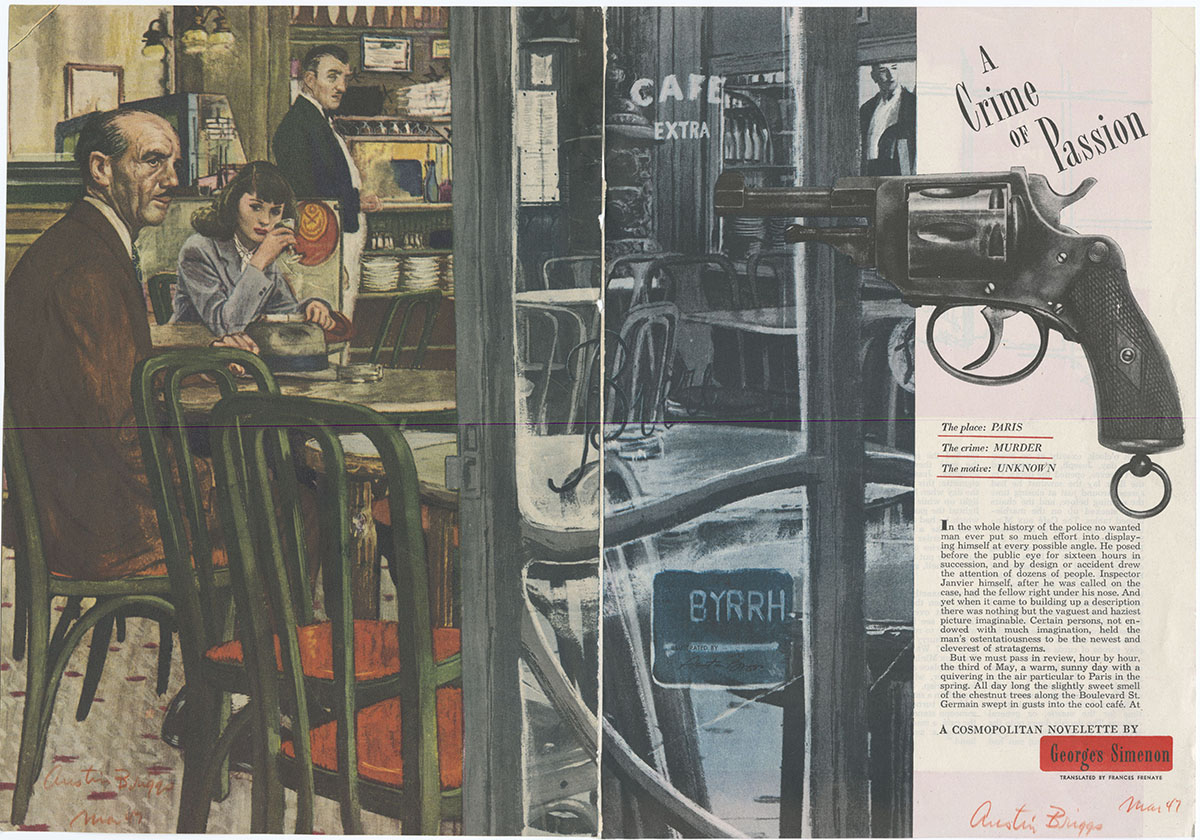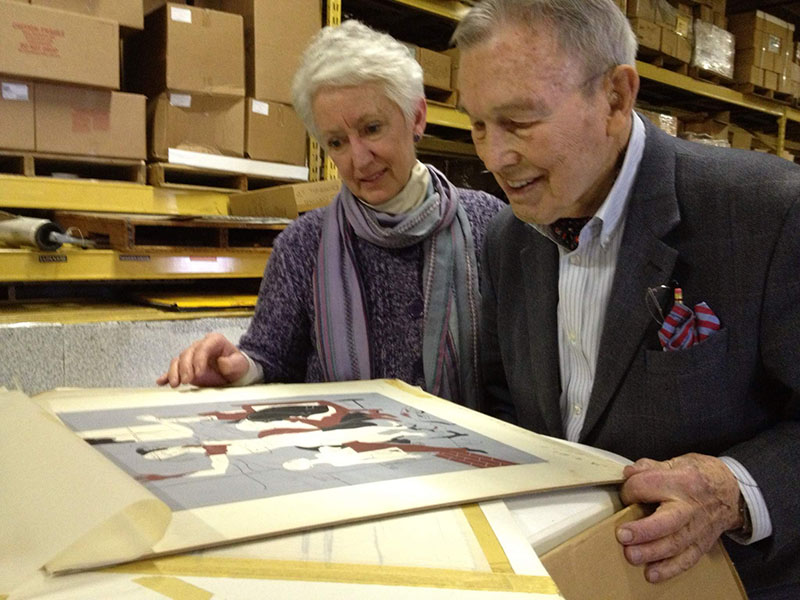Collections Hunters:
Uncovering the Museum’s Art and Archival Collections
Drawing as a way of seeing
July 7, 2020 – Written By: Magdalen Livesey
If you want to observe an artist at work, a good place to start is with his or her sketchbooks. Here are ideas, techniques, observations, memories – all the underpinnings of the finished work. Often the contents are so free and spontaneous that they draw us in, wanting and needing nothing more than these simple lines on paper.
And yet what can look simple to the observer is actually the product of hours of study and practice. The goal, for the accomplished artist, is to free the hand from concern with technique, the better to focus on communicating ideas and emotions.
All the founding artists of Famous Artists School emphasized these principles in their advice to students. Robert Fawcett said it best: “Draw constantly, freely, searchingly, courageously, experimentally, lovingly.” His own sketchbooks are filled with examples that show him searching out the small details that reveal character and recreating them in line.
Fawcett also said, “The more you draw, the more you will see.” Perhaps an artist’s greatest gift is observation. How often has a painting shown us a familiar object or scene in a completely new way? Looking carefully, taking in details, then drawing, over and over – this is how an artist’s eye develops.
Of course, artists draw to capture scenes, characters, atmosphere – as part of their research or just to spark the creative juices. Norman Rockwell described starting with a drawing of a random object and creating a story around it. Austin Briggs sketched a restaurant interior for use in a future illustration. And Fred Ludekens would make multiple thumbnail sketches as he worked out how best to tell a story.
Of course, sometimes artists draw just for the fun of it. Norman Rockwell made these drawings while traveling around the world on assignment for Pan American Airlines. With typical Rockwell humor, they capture character and setting, with Rockwell and his wife in the picture, enjoying the experience.
To find out more about Norman Rockwell, Robert Fawcett, Austin Briggs, Fred Ludekens, visit his profile on the Museum’s Illusation History website (IllustrationHistory.org).









